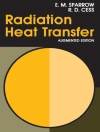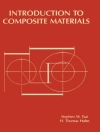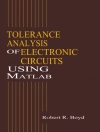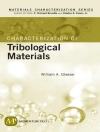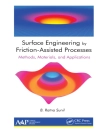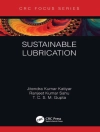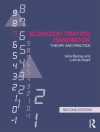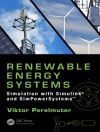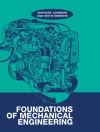Smart technologies comprise a dynamic new interdisciplinary
research field that encompasses a wide spectrum of engineering
applications including, but not limited to, intelligent structures
and materials, actuators, sensors and structural observability,
control systems and software tools for the design of adaptive
structures. Smart technologies focus on the issues surrounding the
safety and integrity of engineering systems.
Smart Technologies for Safety Engineering presents the
achievements of ten years of research from the Smart-Tech Centre
applied to some of the key issues of safety engineering. Results
presented include:
* Original methods and software tools for modelling, design,
simulation and control of adaptive structures and applicability of
the adaptive concept to the design of structures for extreme
loads;
* Application of the smart-tech concept to hot research topics
and emerging engineering issues including health monitoring of
structures and engineering systems, monitoring of loading
conditions, automatic structural adaptation to unpredictable,
randomly changing dynamic conditions and the optimal design of
adaptive structures and engineering systems;
* Numerically efficient and original software packages that can
be used for the design of adaptive, as well as passive (without
control devices) structures.
* The Virtual Distortion Method, which has been developed
especially for fast reanalysis of structures and systems and exact
sensitivity analysis, allowing for effective modelling, design,
health monitoring and control of smart engineering systems.
The original research and practical applications in Smart
Technologies for Safety Engineering will appeal to a broad spectrum
of engineers, researchers, professors and graduate students
involved in the research, design and development of widely
understood adaptronics and mechatronics, including smart
structures and materials, adaptive impact absorption, health and
load monitoring, vibration control, vibroacoustics and related
issues.
Table of Content
Preface
About the Authors
Organization of the Book
1 Introduction to Smart Technologies
Jan Holnicki-Szulc, Jerzy Motylewski and Przemyslaw Kolakowski
1.1 Smart Technologies – 30 Years of History
1.2 Smart-Tech Hardware Issues
1.3 Smart-Tech Software Issues
References
2 The Virtual Distortion Method-A Versatile Reanalysis Tool
Przemyslaw Kolakowski, Marcin Wiklo and Jan Holnicki-Szulc
2.1 Introduction
2.2 Overview of Reanalysis Methods
2.3 Virtual Distortion Method – The Main Idea
2.4 VDM in Structural Statics
2.5 VDM in Structural Dynamics
2.6 VDM-Based Sensitivity Analysis
2.7 Versatility of VDM in System Modeling
2.8 Recapitulation
References
3 VDM-Based Health Monitoring of Engineering Systems
Przemyslaw Kolakowski, Andrzej Swiercz, Anita Orlowska, Marek Kokot and Jan Holnicki-Szulc
3.1 Introduction to Structural Health Monitoring
3.2 Damage Identification in Skeletal Structures
3.3 Modeling and Identification of Delamination in Double-Layer Beams
3.4 Leakage Identification in Water Networks
3.5 Damage identification in Electrical Circuits
References
4 Dynamic Load Monitoring
Lukasz Jankowski, Krzysztof Sekula, Bartlomiej D. Blachowski, Marcin Wiklo, and Jan Holnicki-Szulc
4.1 Real-Time Dynamic Load Identification
4.2 Observer Technique for On-Line Load Monitoring
4.3 Off-Line Identification of Dynamic Loads
References
5 Adaptive Impact Absorption
Piotr K. Pawlowski, Grzegorz Mikulowski, Cezary Graczykowski, Marian Ostrowski, Lukasz Jankowski and Jan Holnicki-Szulc
5.1 Introduction
5.2 Multifolding Materials and Structures
5.3 Structural Fuses for Smooth Reception of Repetitive Impact Loads
5.4 Absorption of Repetitive, Exploitative Impact Loads in Adaptive Landing Gears
5.5 Adaptive Inflatable Structures with Controlled Release of Pressure
5.6 Adaptive Crash Energy Absorber
References
6 VDM-Based Remodeling of Adaptive Structures Exposed to Impact Loads
Marcin Wiklo, Lukasz Jankowski, Malgorzata Mr´oz and Jan Holnicki-Szulc
6.1 Material Redistribution in Elastic Structures
6.2 Remodeling of Elastoplastic Structures
6.3 Adaptive Structures with Active Elements
6.4 Remodeling of Damped Elastic Structures
References
7 Adaptive Damping of Vibration by the Pre-stress Accumulation Release Strategy
Arkadiusz Mr´oz, Anita Orlowska and Jan Holnicki-Szulc
7.1 Introduction
7.2 Mass-Spring System
7.3 Delamination of a Layered Beam
7.4 Experimental Verification
7.5 Possible Applications
References
8 Modeling and Analysis of Smart Technologies in Vibroacoustics
Tomasz G. Zielinski
8.1 Introduction
8.2 Biot’s Theory of Poroelasticity
8.3 Porous and Poroelastic Material Data and Coefficients
8.4 Weak Forms of Poroelasticity, Elasticity, Piezoelectricity and Acoustics
8.5 Boundary Conditions for Poroelastic Medium
8.6 Interface Coupling Conditions for Poroelastic and Other Media
8.7 Galerkin Finite Element Model of a Coupled System of Piezoelectric, Elastic, Poroelastic and Acoustic Media
8.8 Modeling of Poroelastic Layers with Mass Implants Improving Acoustic Absorption
8.9 Designs of Active Elastoporoelastic Panels
8.10 Modeling and Analysis of an Active Single-Plate Panel
References
Acknowledgments
Index
About the author
This book presents the research results obtained over the last
decade by the Smart Technology Centre (STC), href=’http://smart.ippt.gov.pl/’>http://smart.ippt.gov.pl/,
operating at the Institute of Fundamental Technological research
(IPPT) of the Polish Academy of Sciences (PAN), Warsaw,
Poland. It collects achievements of several Ph D theses, already
completed or still being elaborated. the STC is a division of
IPPT-PAN, headed by Prof. Jan Holnicki-Szulc. He graduated from the
Warsaw University of Technology in civil Engineering (1969) and
simultaneously from the University of Warsaw in Mathematics (1972).
Hs Ph D thesis (1973) and the habilitation thesis (1983) were
defended in IPPT. He spent about 5 years (in the 1980s and 1990s)
visiting various labs became eligible for financial support through
the European research initiatives, i.e. the 4th, 5th and 6th
Framework Programmes.
The first Ph D thesis in the STC was defended by Przemystaw
Kotakowski (1998) and devoted to the application of the virtual
distortion method (VDM) to optimal structural remodeling, treated
as a static problem. Then, one of the next these by Tomasz G.
Zielinski (2003) contained a generalization of the VDM for
structural dynamics and its application to damage identification
via the solution of an inverse problem. Anita Ortowska (2007) in
her thesis developed an application of the dynamic VDM to the
identification of delamination in composite beams. Further
development of these numerical tools, allowing for fast and
effective structural remodeling and solving coupled dynamic
problems (including redistribution of material, stiffness and
physical nonlinearity), was done by Marcin Wikto (thesis just
completed). Dr Lukasz Jankowski (Ph D defended in BAM, Berlin) and
Dr Barttomiej Btachowski (Ph D defended in IPPT-PAN, Warsaw) joined
the STC in 2005 and ar4e both involved in dynamic load
identification.
The further development of VDM applications to the structural
health monitoring (SHM) concepts and under development in
collaboration with the current Ph D students Andrzej Swiercz and
Marek Kokot (Theses almost completed). Matgorzata Mroz (thesis in
progress) is working on the application of the VDM to optimal
remodeling of damping properties in dynamically excited structures.
Another group of Ph D students, Grzegorz Mikutowski and Piotr
Pawtowski (theses almost completed), Cezary Graczykowski and
Krzysztof Sekuta (theses in progress), Arkadiusz Mroz and Marian
Ostrowski (theses in progress), have already obtained interesting
research results in the field of adaptive impact absorption (AIA).
Finally, Dr Jerzy Motylewski is a key person in the STC in
vibroacoust6ic measurement techniques and hardware development.
The team of seventeen co-authors is presented below; their
contributions to particular chapters are listed in the Organization
of the Book.


